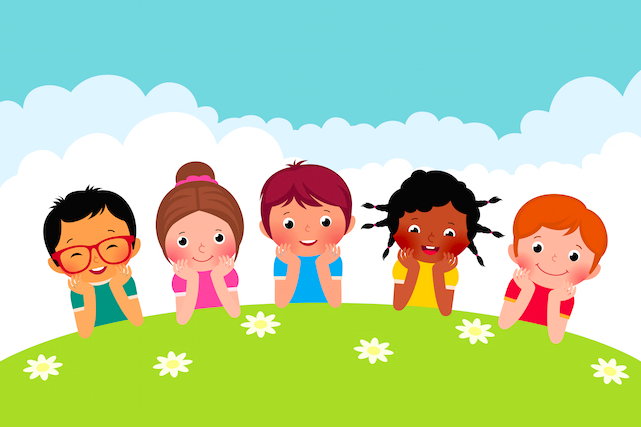
“Compassion is not a relationship between the healer and the wounded. It’s a relationship between equals.” ~Pema Chodron
Growing up, my family ate dinner together nearly every night. It was a given. My mom also created a tradition called “go around the table,” in which everyone in my family would take turns sharing the details of our day.
I often think back on this memory with awe at the impact this simple yet profound activity has had on my life.
While I do not yet have a family, I have introduced “go around the table” to friends at dinner parties and colleagues at work events, and have experienced the benefits of this practice in the classroom, support groups, and spiritual groups.
Sitting around a table with others and sharing is an experience that allows you to see and be seen, and if you have not done it lately, I suspect it could change your life.
With the guidelines below, you can introduce this activity to your family, colleagues, or any other trusted group that seeks to nurture and improve communication, confidence, leadership skills, and community.
1. The table is for sharing, not discussing.
In my family, going around the table meant sharing about the events of our day. Sometimes this meant also sharing how these events made us feel, but we never used this time to plan a family vacation, talk about chores, or discuss “business” of any kind. This is especially important if your table exists in the workplace.
2. Talk about your day (or week, depending on how often your table meets).
You will find yourself wanting to pose specific questions or otherwise shape the way your table shares, but it’s important to keep it very simple.
The focus of the activity is for each person at the table to tell his or her story in this moment in time. Why? Mostly because my mom said so, but also because having an audience to witness our stories as we tell them is extremely validating and empowering. It also gives us the power to own our stories.
“Go around the table” also begs us to learn the art of storytelling—as a kid, my siblings and I quickly learned how to engage each other as we went around the table.
When it was my turn to share, I always began, “I woke up,” and everyone would kind of grumble but also smile. I was funny (and a total hack). I was also learning that I like to make people laugh and humor is a good way to get my message across.
As you share, you will find what type of communication works best for you.
3. Just listen.
When it’s not your turn to talk, you don’t talk. Period. When it is your turn to talk, you do not respond to another person’s story; you simply tell your story.
Once you learn how to not interrupt others with your speech, you can begin to learn how to not interrupt others with your thoughts. When someone else is speaking, try not to plan what you are going to say. Just listen.
Learning to really listen to what others have to say makes us better family members, friends, employees, managers, and people.
4. No one is in charge.
You will need someone to facilitate the sharing, but this does not make them the boss. The facilitator simply calls on someone to share first, and then rejoins the group as you “go around the table.”
The table is a group of peers offering compassionate listening to each other. Avoid viewing one another through hierarchical dichotomies like teacher/student, counselor/patient, healer/wounded, or even parent/child. These relationships have purpose in other settings, but in this exercise, everyone is equal.
If people begin to speak out of turn or abuse the sharing time in any way, each member of the group is equally responsible for maintaining decorum.
When there are very few rules, you may be surprised at how steadfastly your table members adhere to them, even if they are very small children.
5. Allow yourself to be heard.
Talking out loud in a group setting is really scary. It is not something that comes easily or naturally to most people, and cultivating this ability to be heard is one of the best ways to live in a more awakened state.
When you are talking, and people are listening, you are yanked into the present moment.
When you learn to share in this way, you will have terrifying yet beautiful moments when you notice that everyone is listening to you. Breathe and continue your story in this moment, and eventually you may enjoy it. This is true for introverts and extroverts alike.
Learning to be heard will grow your confidence and give you power.
6. Be vulnerable.
Sometimes you will come to the table carrying a heavy burden. One benefit of this practice is that talking about your fears, anxieties, or challenges will lighten your load.
Be vulnerable and share and you will find peace as you allow yourself to be supported by the others at your table.
7. If you don’t want to share, don’t.
You may come to the table feeling something that can’t be articulated. When it’s your turn to talk, you can always pass.
Don’t ever feel pressured to talk about something that you don’t feel ready to talk about and don’t make something up just so you have something to say. This activity demands authenticity or it doesn’t work.
Additionally, the more you put into the exercise, the more you get out, so even if you decide not to share, don’t check out. Be present and listen to what others say.
8. The table is free.
There are a lot of groups out there that offer this type of experience to members, and most of them are wonderful, healing places. If you decide to join a new group or meet-up, do your research and trust your intuition.
Everyone at your table should feel free to come and go as they please. If someone at your table wants you to offer something that does not feel right to you, whether financially, sexually, emotionally, energetically, or otherwise, walk away and find a new table.
If you feel scared to leave or do not know how, find someone outside of the group to talk to. You should never be asked to give more than you are willing or able to give, and you should never be made to feel guilty for walking away from the group for any reason. This is true even if the others at your table are your family.
My mom is a really incredible woman who taught her children compassion from a young age and above all else. Going around the table is an exercise in compassion, and my hope in sharing this practice is that her wisdom will continue to affect positive growth in others.
Happy kids cartoon via Shutterstock
About Amy Early
Amy Early is an aspiring yoga teacher, writer, and present-dweller. When she is not working in hospitality, she is travelling, practicing yoga, enjoying the outdoors, or reading.













 Though I run this site, it is not mine. It's ours. It's not about me. It's about us. Your stories and your wisdom are just as meaningful as mine.
Though I run this site, it is not mine. It's ours. It's not about me. It's about us. Your stories and your wisdom are just as meaningful as mine. 